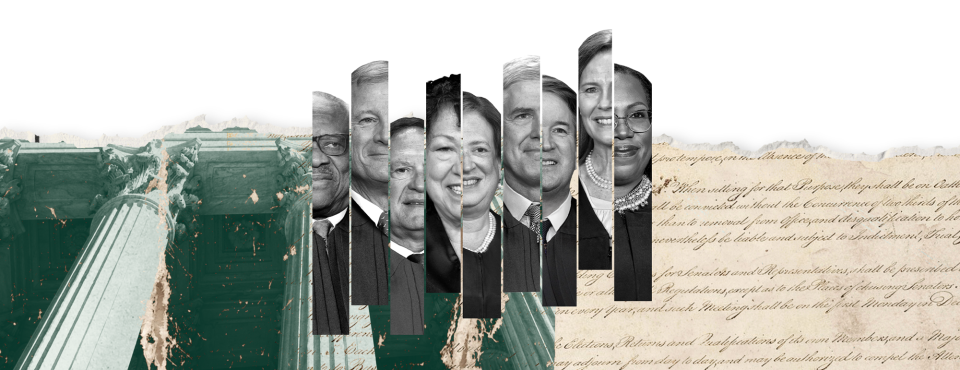
Discrimination against the majority is just as bad as discrimination against minorities. Although the US Supreme Court didn’t explicitly say this in Ames v. Ohio Department of Youth Servicesthat is the case’s ultimate lesson.
Underlying the affirmation that discrimination against any group is wrong, however, is a message that is discouraging for many who believe that discrimination against minorities is especially prevalent and problematic. Despite hints at possible future rifts between the majority and minority on the bench, the unanimous opinion, written by Justice Ketanji Brown Jackson, isn’t likely to have much of an effect on most cases going forward.
The “background circumstances” rule rejected by the court is only applied at the first stage of a Title VII discrimination claim, the plaintiff’s prima facie case. So even if more plaintiffs in the majority can establish their prima facie case (without the additional burden of demonstrating background circumstances), they still must prove that their employer’s reason for the adverse decision is pretextual, a cover-up for discrimination.
It is at this pretext stage that most cases are won or lost.
The plaintiff attempting to establish her employer discriminated against her in this case was a heterosexual woman, Marlean Ames, who believed she was denied a promotion and then demoted because of her sexual orientation. She was replaced by a gay employee for both positions.
But the US Court of Appeals for the Sixth Circuit applied a rule that requires employees who are in the majority (White, male, straight, Christian, etc.) to show background circumstances that support the suspicion that their employer is the unusual one that discriminates against the majority.
Because the plaintiff was terminated by two heterosexual supervisors, and because there wasn’t a pattern at this workplace that the employer frequently favored gay employees over straight employees, the Sixth Circuit held Ames hadn’t made the necessary showing of background circumstances, and therefore her sexual orientation discrimination claim failed.
The assumption behind this heightened proof that the Sixth Circuit (and four other circuits) used was that most employers don’t discriminate against majority groups. If that’s true, then the situation here, in which a straight person was replaced by a gay person, doesn’t necessarily raise an inference of discrimination.
Although the Supreme Court said nothing about the rationale for the heightened standard, it held that the background circumstances test “cannot be squared with the text of Title VII or [the Court’s] longstanding precedents.” The statute clearly states that an employer may not discriminate against any individual based on that individual’s protected class.
The court noted that Title VII draws no distinction between majority-group plaintiffs and minority-group plaintiffs. Citing Bostock v. Clayton Countythe case that first held that discrimination based on sexual orientation is sex discrimination under Title VII, the court emphasized the law’s focus on individuals rather than groups is “anything but academic.” By focusing on individuals in the statute, “Congress left no room for courts to impose special requirements on majority-group” employees.
Given the current court’s stance against affirmative action, and because this background circumstances test and affirmative action share the common rationale that discrimination against the minority remains a significant problem in this country, it wasn’t a surprise the court jettisoned the background circumstances test.
Perhaps what was surprising was that the unanimous opinion was written by Jackson, the only Black justice on the bench appointed by a Democratic president. Jackson didn’t say anything about affirmative action; instead, her opinion relied on a textualist argument that the statute protects all employees and courts therefore can’t place a more burdensome requirement on some plaintiffs than others. As a matter of textual interpretation, the opinion is clearly correct.
But it’s possible that for some of the justices, there is a fundamental disagreement with the rationale for the background circumstances rule lurking behind the textualist argument. At least some members of this court don’t believe that discrimination against the majority is rare.
In his concurring opinion, Justice Clarence Thomas (joined by Justice Neil Gorsuch) alluded to this point in a footnote, where he criticized the rationale for the “background circumstances” rule. Thomas noted that many of the nation’s largest employers have “overtly discriminated against those they deem members of so-called majority groups” as evidenced by their “obsess[ion]” with diversity, equity, and inclusion initiatives and affirmative action plans.
Although the court remanded the case to the Sixth Circuit to analyze the plaintiff’s claim without the background circumstances test, it’s likely the case will come out the same way because the Sixth Circuit already held Ames couldn’t prove pretext.
So even though Ames and the conservative majority achieved only a symbolic victory, the real victory might be the message the case sends—that those in the majority are the “true” victims of discrimination.
The case is Ames v. Ohio Department of Youth ServicesU.S., 23-1039, decided 6/5/25.
This article does not necessarily reflect the opinion of Bloomberg Industry Group, Inc., the publisher of Bloomberg Law and Bloomberg Tax, or its owners.
Author Information
Nicole Porter is a professor of law at William & Mary Law School.
Write for Us: Author Guidelines



